
by Editor BGF | Aug 24, 2025 | News, Shaping Futures
The newly launched Report on Emerging Computing Pathways in Quantum, Neuromorphic, and Photonic Computing by the Data Security Council of India (DSCI) highlights how photonic computing could revolutionize the future of information processing. By using light instead of electricity, photonic systems promise unprecedented speed, energy efficiency, and scalability — breakthroughs essential for advancing AI, secure communications, and global digital infrastructure. For the Boston Global Forum and AIWS, photonic computing represents not only a technological leap but also a pathway to shaping a future where innovation is aligned with ethics, resilience, and the values of an AI World Society.
Please see full here: https://www.apnnews.com/report-on-emerging-computing-pathways-in-quantum-neuromorphic-and-photonic-computing-launched-by-dsci/


by Editor BGF | Aug 24, 2025 | News
(AIWS Peace Symphony)
The Symphony of Peace and Humanity is a landmark work created under the vision of the Boston Global Forum (BGF) and the AI World Society (AIWS). Composed by human musicians with the assistance of AI, it draws upon Vietnamese folk traditions and the universal language of symphonic music to tell a timeless story: humanity’s struggle, compassion, and triumph.
Inspired by the life and philosophy of King–Buddha Trần Nhân Tông—a leader who defended his nation against invasion and later renounced power to dedicate his life to reconciliation—the symphony journeys through four movements: the determination of resistance, the thunder of battle, the sorrow and compassion of reconciliation, and the radiant joy of peace.
Alongside the full orchestra, Vietnamese traditional instruments such as the đàn bầu and sáo trúc sing with a uniquely human voice, while a choir proclaims a message for our age: “No hatred – Only love.”
This symphony is more than music. It is a cultural and moral statement for the Age of AI, affirming that technology must be guided by ethics, compassion, and human dignity.
“Symphony of Peace and Humanity — AIWS Peace Symphony”
Official Press Conference: December 12, 2025, Boston Symphony Hall
Official Performance: January 9, 2026, Nha Trang, Vietnam, as part of the AIWS Music for Humanity Forum and AIWS Film Park Gala

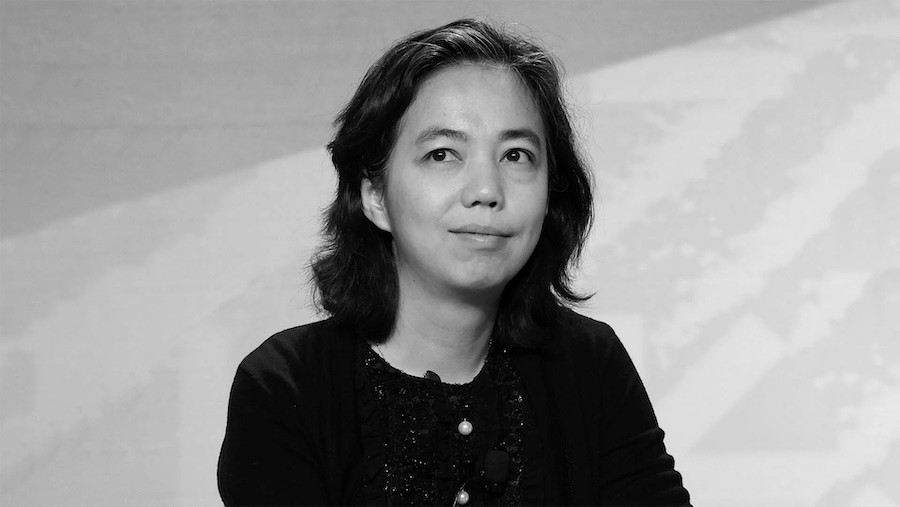
by Editor BGF | Aug 24, 2025 | Global Alliance for Digital Governance
At the recent Ai4 conference, two of the world’s most influential AI voices—Geoffrey Hinton, the “godfather of AI,” and Fei-Fei Li, the “godmother of AI”—offered starkly different visions for the future of artificial intelligence. Hinton warned of losing control and even suggested building a “Mother AI” with protective instincts, while Li firmly countered that humans must remain in control from the very beginning, championing a model of human-centered AI. Their debate underscores a growing consensus: we need a radical rethink of AI development and deployment. Rather than bolting on safeguards after the fact, policies must embed ethics, accountability, and human dignity into AI systems from the start. For BGF and AIWS, this reflects our central mission: to ensure that AI strengthens democracy, respects human values, and builds an AI World Society where all humans win.
Please see full here: https://www.inc.com/rebecca-hinds/why-ai-experts-say-we-need-a-radical-rethink-of-the-technology/91229674

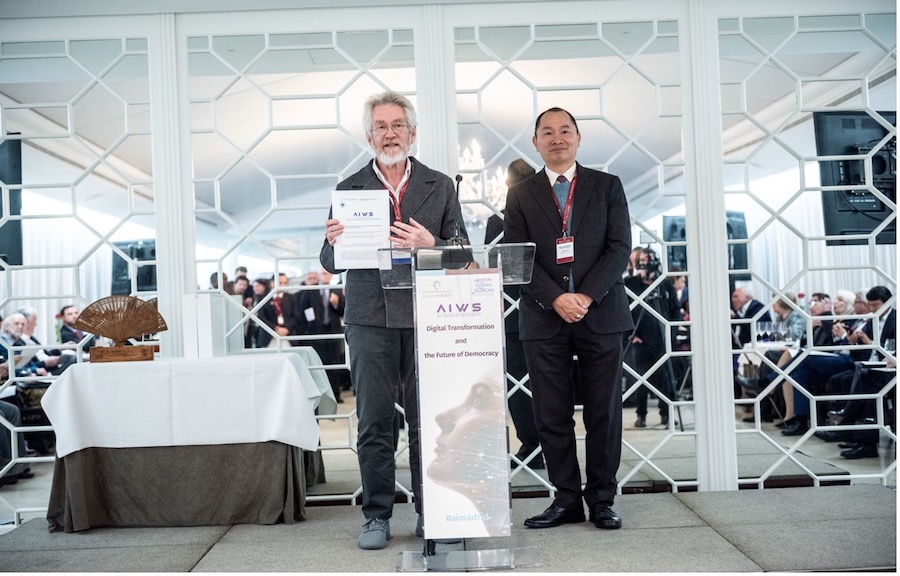
by Editor BGF | Aug 17, 2025 | News
Next week, a delegation of Vietnamese leaders who report directly to the Politburo of the Party of Vietnam will visit Boston for high-level discussions with members of the BGF–AIWS Family.
The meetings, to be held at Harvard Business School, Harvard Kennedy School, MIT, and the Harvard University Faculty Club, will focus on:
- AIWS Government 24/7 – advancing continuous, AI-assisted democratic governance.
- AIWS Digital Assets – building trusted, ethical, and human-centered digital economies.
- S.–Vietnam Relations – strengthening partnerships for innovation, education, and peace in the Age of AI.
This dialogue reflects the Boston Global Forum’s mission to connect global leaders, scholars, and innovators in shaping policies and frameworks that enhance democracy, ethics, and humanity in the AI era.

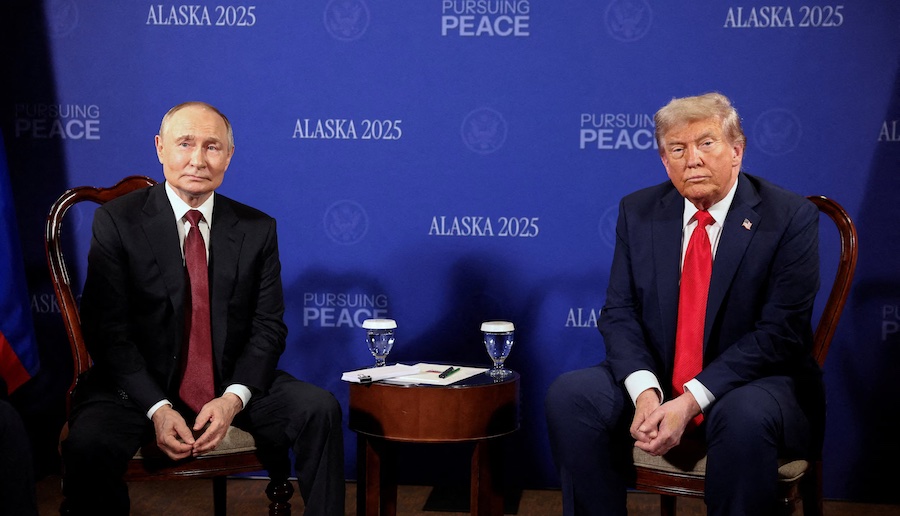
by Editor BGF | Aug 17, 2025 | News
On the Trump–Putin Meeting in Alaska (Aug 15, 2025) and the Upcoming Trump–Zelensky Meeting in Washington (Aug 18, 2025)
Boston, August 17, 2025
The Boston Global Forum (BGF) recognizes the significance of recent high-level diplomacy between U.S. President Donald Trump, Russian President Vladimir Putin, and the upcoming talks with Ukrainian President Volodymyr Zelenskyy.
While the Alaska summit on August 15 did not yield a ceasefire, it opened a channel of renewed dialogue. The announcement that the U.S. and Europe may extend robust security guarantees to Ukraine reflects a potential pathway toward peace and long-term stability. At the same time, European leaders have reaffirmed their unwavering support for Ukraine’s sovereignty and territorial integrity, insisting that no peace agreement can be built on coercion or forced concessions.
On August 18 in Washington, President Trump will meet with President Zelenskyy, joined by European leaders, in what could become a pivotal step toward ending the war.
The Boston Global Forum’s Perspective: Stop the War to Save Lives
The Boston Global Forum calls for a peace process centered on humanity, ethics, and justice, in line with the AI World Society (AIWS) Standards and Values:
- Stop the War, Save People
Every day the war continues, innocent lives are lost on both sides. BGF urges leaders to prioritize the protection of civilians above all else.
- Dialogue with Dignity
Peace must respect Ukraine’s security and independence. Any agreement must be equitable, rooted in truth, and aligned with democratic principles.
- Inclusive Diplomacy
Ukraine must be included in the negotiations, not pushed to the margins. Solutions cannot be imposed; they must be built in partnership with those who endure the war.
- Ethics and Humanity as the Foundation of Peace
Guided by AIWS Values, BGF advocates for a peace framework that integrates human dignity, democracy, and compassion as the foundation of a lasting solution.
The Boston Global Forum urges all parties to seize this moment of dialogue to advance a just and sustainable peace. The war must end—not for the sake of power, but for the sake of humanity.

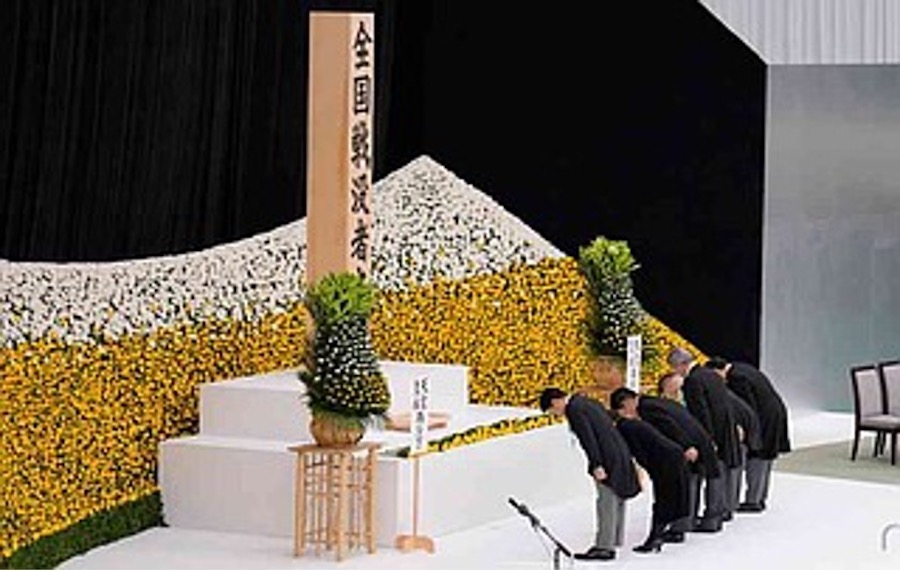
by Editor BGF | Aug 17, 2025 | Shinzo Abe Initiative for Peace and Security, News
Japan paid tribute Friday to more than 3 million war dead as the country marked its surrender that ended World War II 80 years ago, as concern grows about the rapidly fading memories of the tragedy of war and the bitter lessons from the era of Japanese militarism.
Prime Minister Shigeru Ishiba expressed “remorse” over the war — the first time a Japanese leader has used the word in a Aug. 15 address since former premier Shinzo Abe shunned it in 2013.
Ishiba called the war a mistake, but did not mention Japan’s aggression across Asia or apologize.
MOMENT OF SILENCE, PEACE PLEDGE AND CHRYSANTHEMUM FLOWERS
“We will never repeat the tragedy of the war. We will never go the wrong way,” Ishiba said. “Once again, we must deeply keep to our hearts the remorse and lesson from that war.”
He vowed to pass his peace pledge to next generations.
In a national ceremony Friday at Tokyo’s Budokan hall, about 4,500 officials and bereaved families and their descendants from around the country observed a moment of silence at noon, the time when Emperor Hirohito’s surrender speech began on Aug. 15, 1945. Participants later offered chrysanthemum flowers for the war dead.
Please see full here: https://www.hotsr.com/news/2025/aug/17/japan-marks-80th-anniversary-of-wwii-surrender-as/


by Editor BGF | Aug 17, 2025 | News
Looking back on the past two decades, my enduring friendship with Tuan Anh Nguyen stands out as one of the greatest personal rewards of my professional life. Our relationship, forged through years of collaboration, has matured into something both deeply meaningful and intellectually enriching. It rests securely on a foundation of mutual trust, lively intellectual exchange, and a shared vision for a world ever more interconnected and compassionate. I treasure not only the warmth of our personal connection but also my abiding admiration for Tuan’s remarkable leadership, particularly as the guiding spirit behind the Boston Global Forum.
When we first established the Boston Global Forum in my Kennedy School office in 2012, my view of its potential was rather local in scope. My hope was to tap the unrivaled intellectual energy of Greater Boston—a region blessed with a constellation of world-class colleges and universities. I imagined drawing together the area’s scholars, policymakers, and thought leaders, creating a forum through which we could address pressing international challenges.
But if, at that inception, Tuan’s vision exactly matched my own, it quickly took on a new and far broader ambition. Almost immediately, he began to expand the Forum’s reach beyond the local and even national spheres, envisioning an institution that would serve as a catalyst for genuine international dialogue and partnership. He started with the inclusion of contributors from Vietnam and then facilitated a steady influx of voices and participants from around the world. Japan became represented, not only by diplomats and policymakers but also by respected scholars. Europe soon joined the conversation. Tuan’s efforts brought Vaira Vīķe-Freiberga, the former President of Latvia, into the Forum. That opened the door for our participation in the influential Riga Conference. This annual convocation in Latvia gathers leading experts, academics, journalists, and entrepreneurs to address key issues facing the transatlantic community.
The momentum did not stop there. Thanks to Tuan’s unique ability to forge high-level relationships, we found ourselves in dialogue with Japanese Prime Minister Shinzo Abe and influential Japanese ministers, and, through further outreach, with senior representatives of the United Nations and the Atlantic Alliance. Each new partnership broadened our scope and deepened our influence. One of the most striking milestones came in 2023, when Tuan, on behalf of the Boston Global Forum, addressed an audience of 100,000 people at the ceremony to celebrate the 70th birthday of India’s spiritual leader. Amma. He presented her the Boston Global Forum’s World Leader for Peace and Security Award. The event coincided with the holding of the C20 meeting in India—a testament to how far the organization had come from its Boston roots. Shortly afterward, Tuan spearheaded an agreement with the Vatican on ethical issues relating to artificial intelligence, culminating in the extraordinary moment of his audience with Pope Francis. The pace has not let up; in just the past year, the Boston Global Forum has convened sessions in the major world capitals of Tokyo and Paris, the latter highlighted by Tuan’s meeting with President Emmanuel Macron of France.
These developments have been transformative, not only elevating the global profile of the Boston Global Forum but also dramatically amplifying its ability to shape important conversations on the world stage. And one thing is abundantly clear to me: Tuan’s journey has no finish line. His relentless optimism and drive ensure that the Boston Global Forum will continue to grow in reach and impact. I look forward, with anticipation, to witnessing the new frontiers he and the Forum will cross in the years ahead.

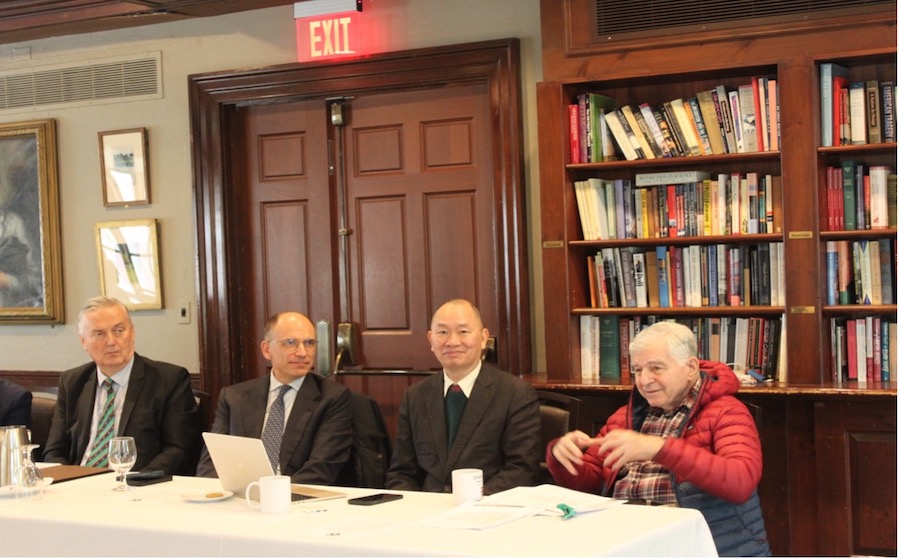
by Editor BGF | Aug 17, 2025 | News, Shaping Futures
The Trump-OpenAI AI partnership, announced earlier this month, marks a seismic shift in how the U.S. government leverages artificial intelligence to modernize operations, reduce costs, and enhance national security. This groundbreaking collaboration, formalized in August 2025, secures access to OpenAI’s ChatGPT Enterprise for all federal agencies at a symbolic cost of $1 per agency annually. The initiative aligns seamlessly with the administration’s broader AI Action Plan, which prioritizes infrastructure investment, regulatory streamlining, and global AI leadership, positioning the U.S. as a frontrunner in the AI race.
Please see full here: https://www.ainvest.com/news/trump-openai-ai-partnership-catalyst-government-productivity-ai-infrastructure-investment-2508/

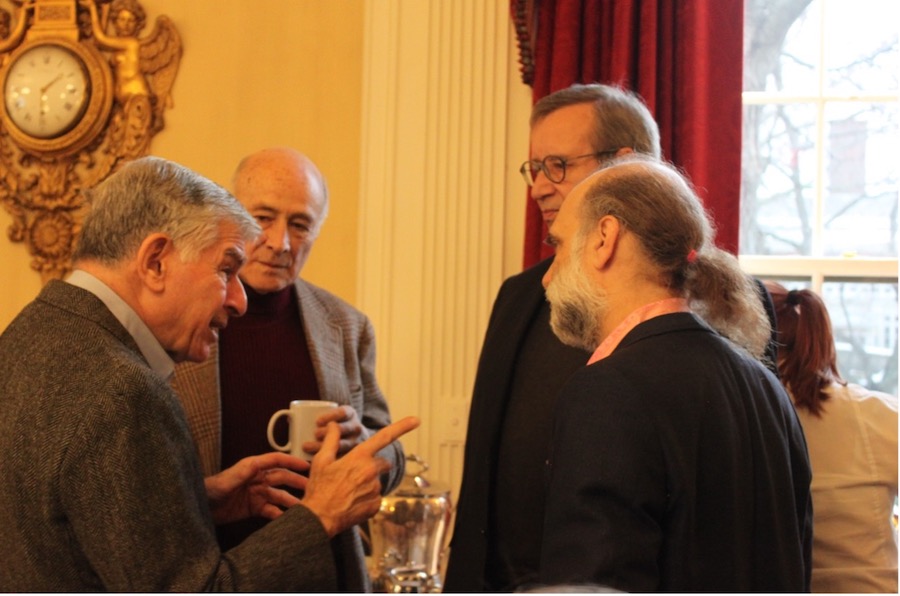
by Editor BGF | Aug 17, 2025 | Global Alliance for Digital Governance
U.S. authorities are secretly tracking shipments of advanced AI chips from prominent manufacturers such as Dell, Super Micro, Nvidia, and AMD to prevent their illegal diversion to China. This initiative reflects President Donald Trump’s strategic effort to gain a competitive edge over China’s tech market by imposing stringent controls on the export of critical artificial intelligence (AI) technology.
Trump has not only blocked American firms from selling AI chips to China but has also implemented a covert tracking mechanism to ensure compliance with these restrictions. According to a Reuters report, “U.S. authorities have secretly placed location tracking devices in targeted shipments of advanced chips they see as being at high risk of illegal diversion to China, according to two people with direct knowledge of the previously unreported law enforcement tactic.” This move underscores the administration’s heightened focus on safeguarding sensitive technology amid escalating U.S.-China tech rivalry.
While the government’s tracking efforts are limited to “select shipments under investigation,” the full scope of this practice remains unclear, as Reuters was unable to determine the extent or the specific agencies involved. However, the report identified potential partners, including the Commerce Department’s Bureau of Industry and Security, which oversees export controls and enforcement, alongside Homeland Security Investigations and the FBI. This multi-agency approach highlights the complexity and sensitivity of the operation, aimed at curbing the flow of cutting-edge AI technology to a geopolitical competitor.
https://reason.com/2025/08/15/trumps-tracking-of-ai-chip-shipments-exposes-flaws-in-his-export-control/











